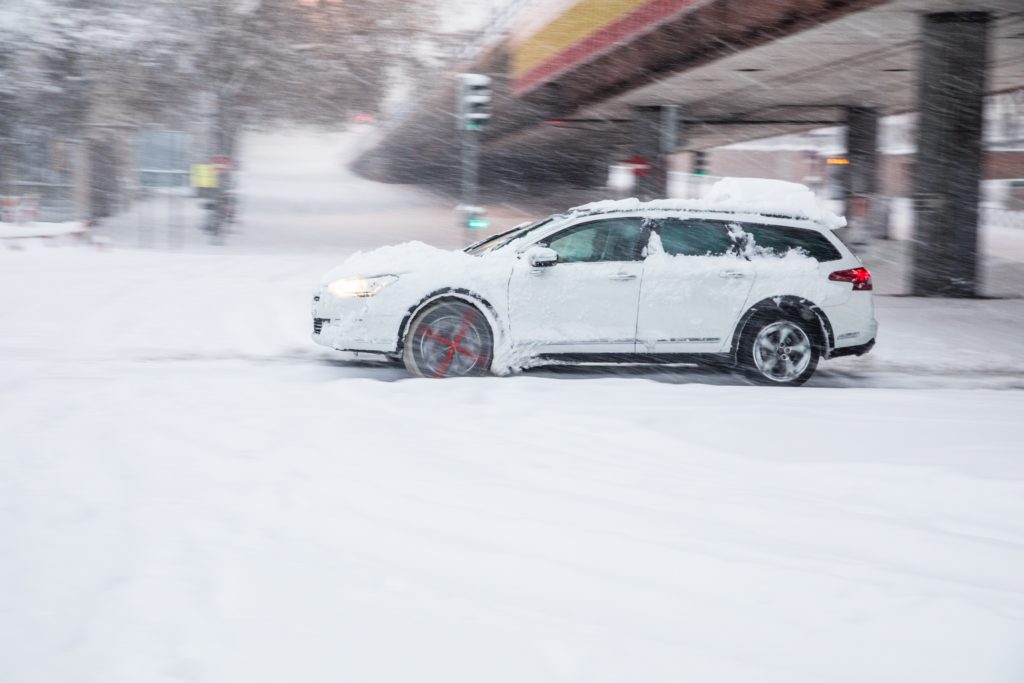 Every winter finds Maryland roads a skating rink full of hazards causing incidents, from minor fender benders and off-road skids to serious and life-altering accidents. Driving in winter weather can be hazardous.
Every winter finds Maryland roads a skating rink full of hazards causing incidents, from minor fender benders and off-road skids to serious and life-altering accidents. Driving in winter weather can be hazardous.
Here are the top causes of serious auto accidents in winter:
1. Black Ice
Black ice refers to the transparent coating of ice on a road’s surface, usually resulting from refreezing of melted snow or ice. Black ice is dangerous because it looks like wet pavement. That’s seldom a concern for drivers, however, and they will hit a patch of black ice at normal speeds, causing the vehicle to slide. The seriousness of an incident involving black ice will depend on how much is on the road’s surface, how fast the car was traveling, and the driver’s ability to react quickly.
2. Slush
After roads have been treated and plowed, drivers think it’s safe to hit the highway at normal speeds. Even the best plowed roads can have patches of slushy snow and ice, and for an unprepared driver traveling the speed limit, the slush is as dangerous as ice on the road’s surface. Slush is dangerous for several reasons:
- It collects on your windshield, decreasing visibility
- It keeps your tires from grabbing the surface of the road
- It can hide ice underneath
- Slush can refreeze into ice
3. Failure of Drivers to Remove Snow from Vehicles
Driving with snow on your vehicle is a hazard to every other driver around you. The snow can blow off your car in a powder that reduces visibility for other cars around you, slide off the vehicle and cause slippery conditions for the vehicles near you, or break off in solid chunks of ice that can damage a vehicle’s windshield and startle the person driving it. In Maryland, there is not a specific law for driving in winter weather that snow is removed from your vehicle if it is not impeding your own ability to see clearly, but it is “recommended.” Drivers of snow-covered cars or trucks can be held responsible for any damages resulting from snow or ice falling from their vehicles.
4. Other Drivers
Winter accidents are frequently caused by drivers themselves, such as failure to yield a right-of-way, driving too fast for the conditions of the road, and driving at a speed that creates an inability to stop at traffic signals or signs. In slippery conditions, these accidents frequently compound due to road conditions, making the accident difficult to avoid by other drivers.
5. Poor Visibility
Whether it’s driving in white-out conditions or battling the salty spray from roads, winter weather creates extremely dangerous visibility issues. To make matters even worse, other drivers may insist on using high beams in bad weather conditions such as fog, snow, sleet, or rain. High beams are not intended for use in these conditions, and not only add to your own difficulty seeing, but blind drivers in oncoming traffic.
6. Stalled Drivers on the Side of the Road
If the roads are slick, drivers need to be alert for vehicles that have stalled or skidded off the main roadways. While they may “almost” be off the road, they may still be partially blocking a lane.
7. Indistinct Pavement Markings
Snow-covered roads almost always equal obscured pavement markings such as lane indicators, pedestrian walkways, and “turn only” arrows. If you must be on roads before they are paved, make sure you are in the middle of your lane and use caution at intersections and traffic signals.
If you’ve been involved in a serious auto accident because of another driver’s actions in dangerous winter weather, call attorney Arthur Crum at 301-662-4088 to discuss your case, or contact us here for a free, no-obligation consultation.

